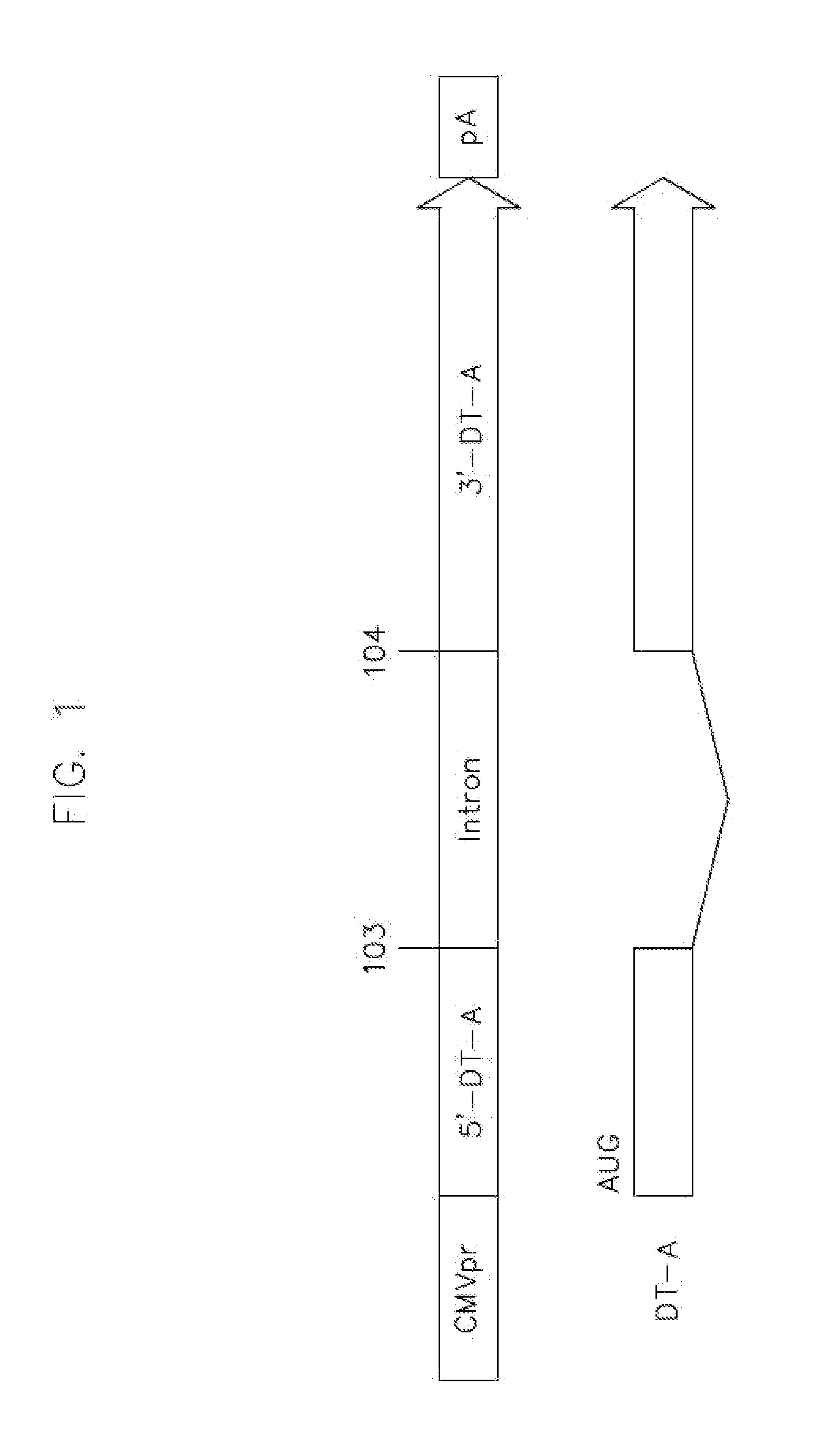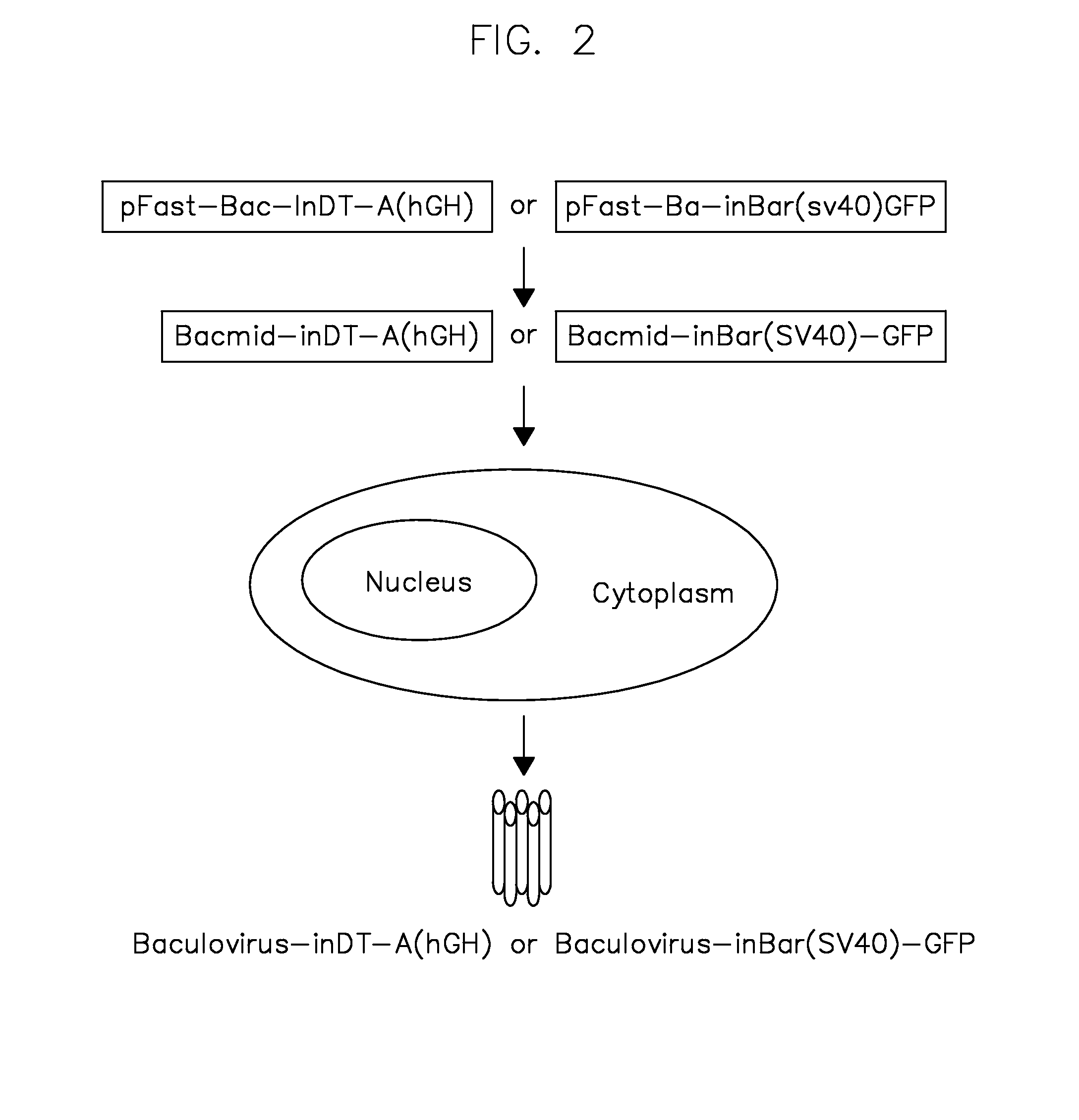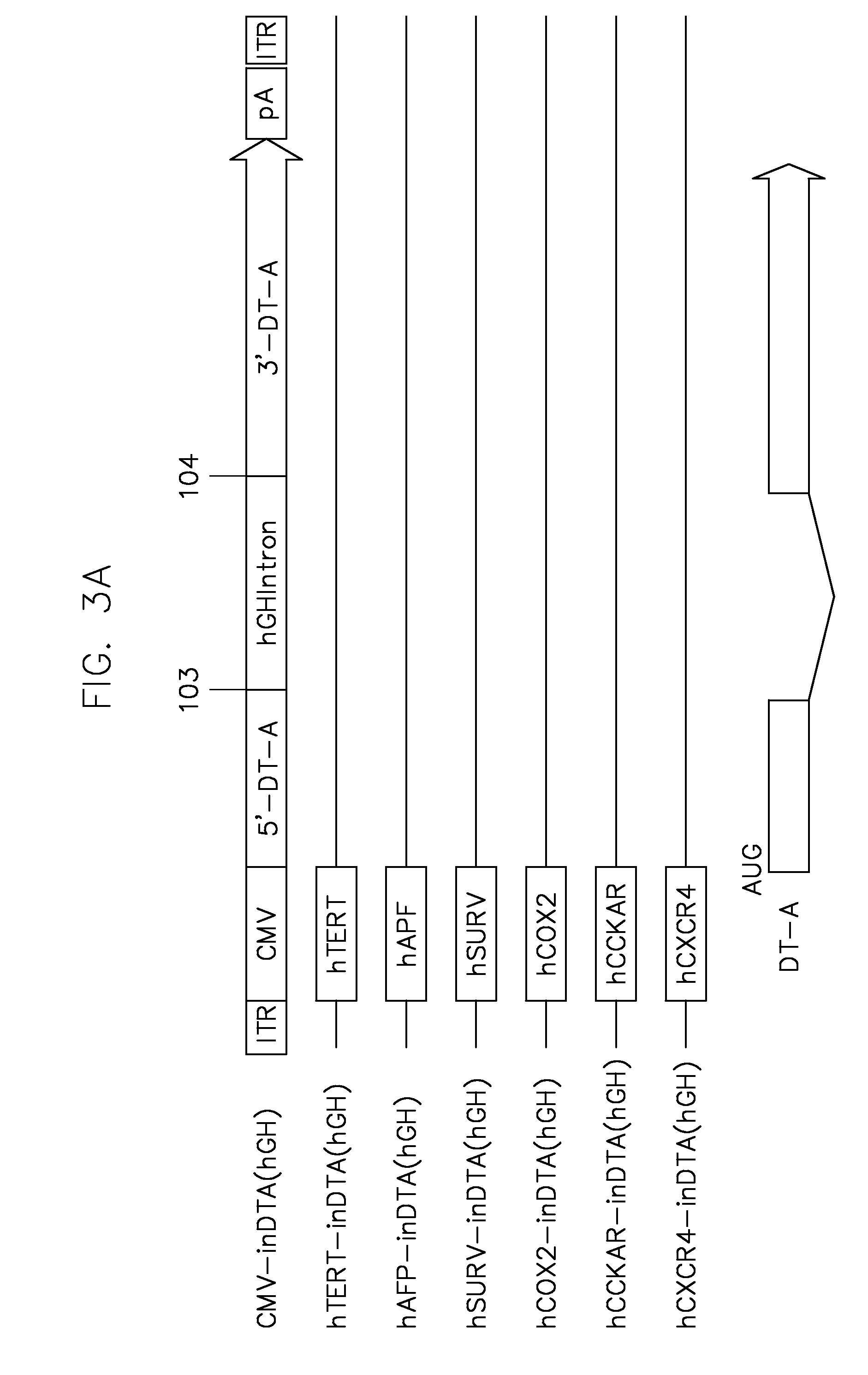Vectors harboring toxic genes, methods and uses therefor
a technology of toxic genes and vectors, applied in the field of nucleic acid vectors, can solve the problems of difficult to fulfill the production of viral vectors containing toxin genes such as diphtheria toxin a fragment (dt-a), pseudomonas exotoxin (pe) or barnase, and the inability to achieve complete abolition of non-specific cell killing
- Summary
- Abstract
- Description
- Claims
- Application Information
AI Technical Summary
Benefits of technology
Problems solved by technology
Method used
Image
Examples
example 1
[0079]This example illustrates structure and construction of plasmid pFB-CMV-DTA, a pFastBac shuttle plasmid (Invitrogen Corporation, Carlsbad, Calif.) comprising a CMV promoter operably linked upstream to a DT-A coding sequence (FIG. 6).
[0080]To construct this plasmid, a plasmid containing the DT-A gene (GenBank access no. X00703) was digested with restriction endonucleases EcoRI and BamHI to generate a fragment containing a DT-A coding sequence with EcoRI and BamHI sticky ends. This fragment was ligated to the EcoRI and BamHI sites of plasmid pFB-AAV-CMV-SV40pA to create pFB-CMV-DTA. To insert the human growth hormone intron into the DT-A gene, a PCR method was employed. First, the upstream junction sequence together with the 5′-DT-A sequence from nucleotide numbers 1 to 103 were amplified using forward primer 5′-GATTATGATCACTAGTCGAG-3′ (SEQ ID NO: 2) and reverse primer 5′-GGGCGCTTACCTTTTTGAATGGAATCTACA-3′ (SEQ ID NO: 3) (bold typeface indicates human growth hormone intron sequenc...
example 2
[0083]This example illustrates structure and construction of plasmid pFB-CMVtetO-DTA-p10-TetR. To construct pFB-CMVtetO-DTA-p10-TetR, a p10-driven TetR expression cassette was released from a plasmid by digestion with restriction endonucleases HindIII and AvrII. The released fragment was inserted into HindIII and AvrII sticky ends of plasmid pFB-CMV-DTA that had been digested with restriction endonucleases HindIII and AvrII.
example 3
[0084]This example illustrates insertion of mammalian introns to disrupt toxin gene ORFs.
[0085]To generate the vectors of some embodiments of the present teachings, the human growth hormone (hGH) intron was inserted into the DT-A ORF between nucleotides 103 and 104 (the first letter of start codon ATG is assigned as nucleotide No. 1). The SV40 large T antigen (SV40LT) intron was inserted into the barnase ORF between nucleotides 9 and 10. The DT-A and barnase ORFs without intron interruption were used as controls. All the toxin coding sequences with or without intron interruption were cloned into the pFastBac shuttle plasmid and the schematic depiction of the expression cassettes are shown in FIG. 3.
[0086]FIG. 3 illustrates genetic and transcriptional maps of representative recombinant baculoviruses carrying the toxin expression cassettes flanked by AAV ITRs. AAV vectors were produced by co-infecting insect cells with a second recombinant baculovirus carrying AAV rep and cap genes. U...
PUM
| Property | Measurement | Unit |
|---|---|---|
| Time | aaaaa | aaaaa |
| Time | aaaaa | aaaaa |
| Time | aaaaa | aaaaa |
Abstract
Description
Claims
Application Information
 Login to View More
Login to View More - R&D
- Intellectual Property
- Life Sciences
- Materials
- Tech Scout
- Unparalleled Data Quality
- Higher Quality Content
- 60% Fewer Hallucinations
Browse by: Latest US Patents, China's latest patents, Technical Efficacy Thesaurus, Application Domain, Technology Topic, Popular Technical Reports.
© 2025 PatSnap. All rights reserved.Legal|Privacy policy|Modern Slavery Act Transparency Statement|Sitemap|About US| Contact US: help@patsnap.com



